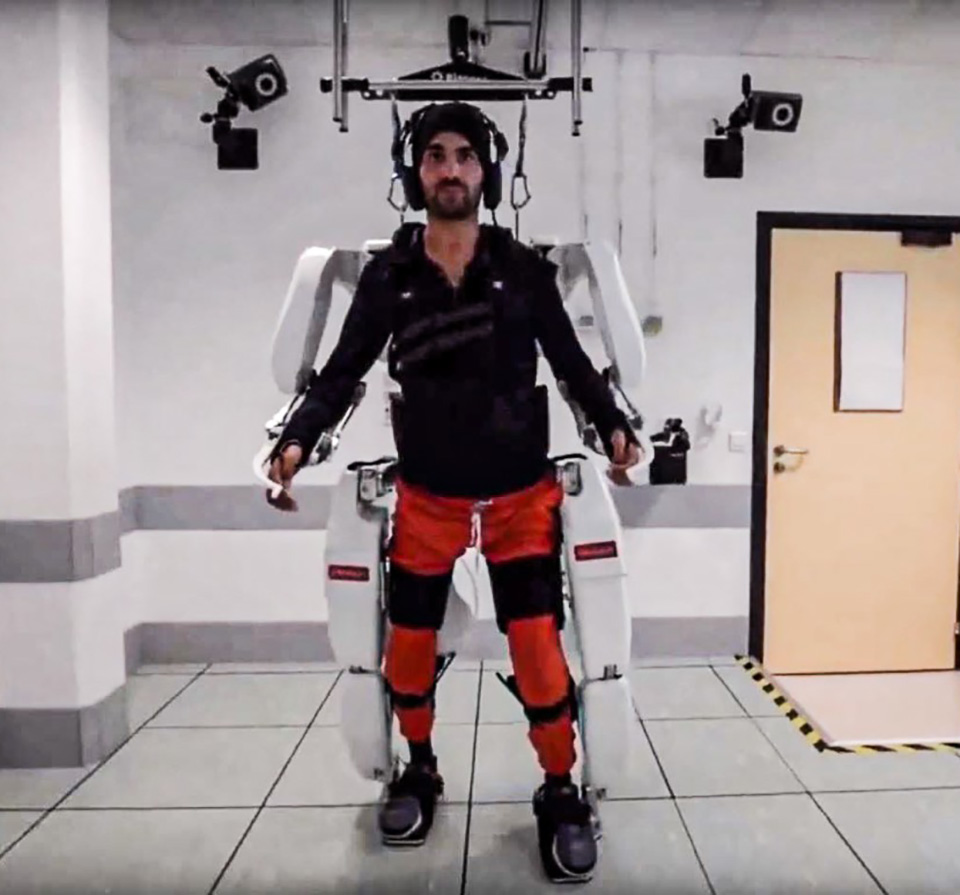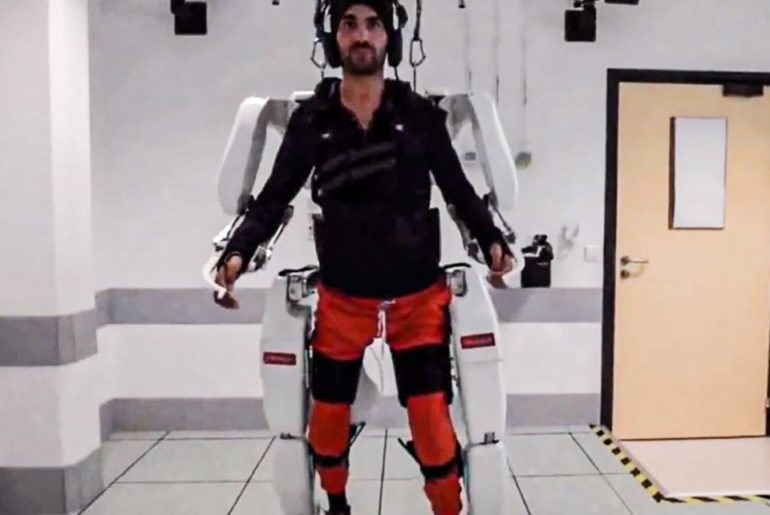
University of Grenoble researchers have spent two years developing and teaching 30-year-old quadriplegic Thibault to move his arms and legs using a brain-controlled exoskeleton. He suffered a cervical spinal cord injury that left him paralyzed from the shoulders down after falling 15m in a night club and began the study with only the ability to move his biceps as well as right wrist.
This four-limbed robotic system uses a ceiling-mounted harness for balance and is operated by recording / decoding brain signals. Thibault needed surgery to have two implants attached to the surface of his brain, covering the areas that control movement. Sixty-four electrodes located on each implant analyze his brain activity and then beam the instructions to a computer. It took him a while to familiarize himself with the exoskeleton, but eventually he was able to turn a switch on / off, move a pong-style paddle left / right on screen, and even move virtual limbs while wearing a VR headset. The next step is upgrading the exoskeleton so patients can walk and balance themselves autonomously without the ceiling harness.




